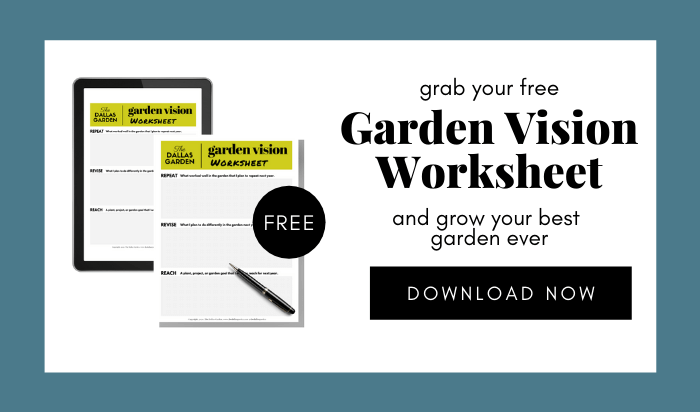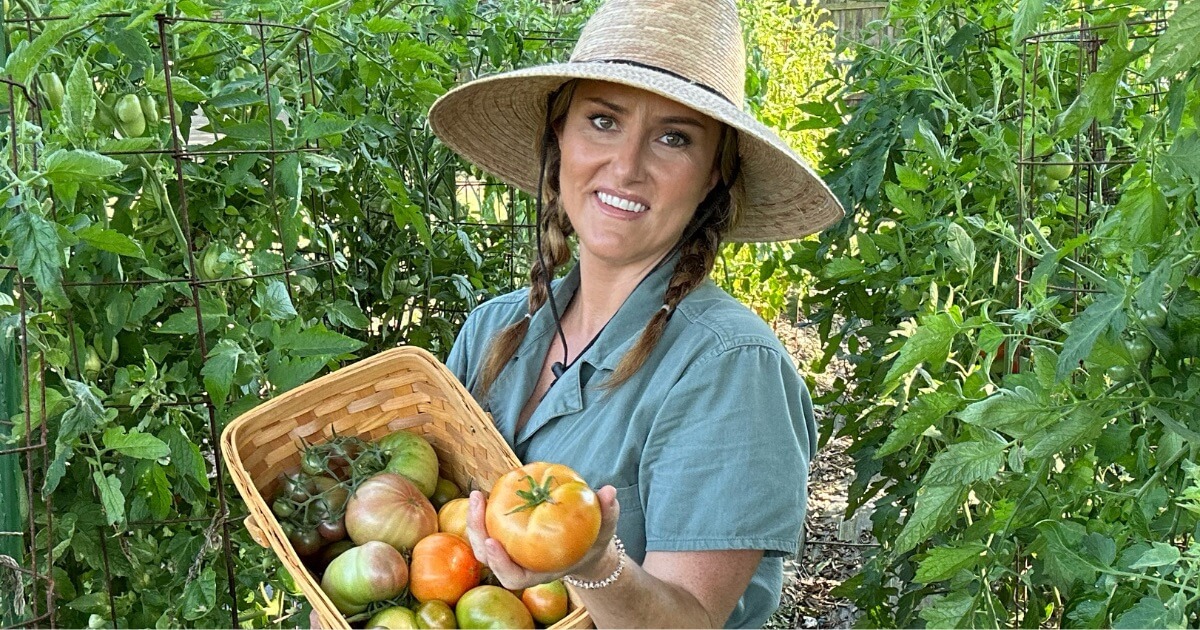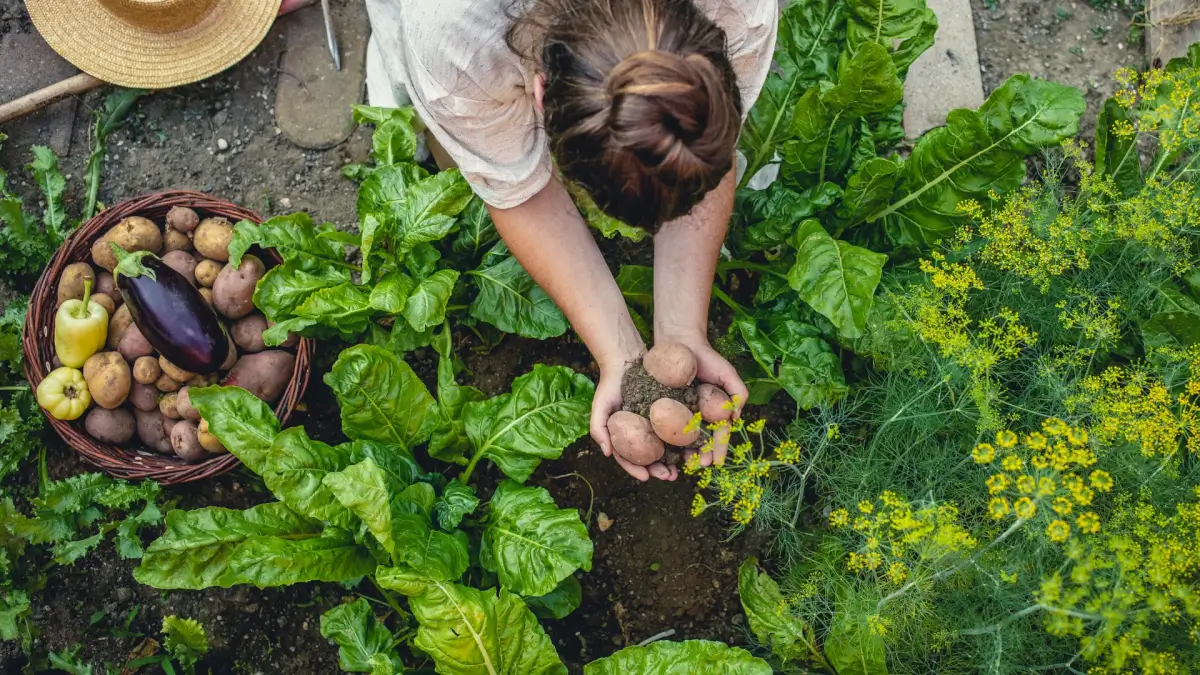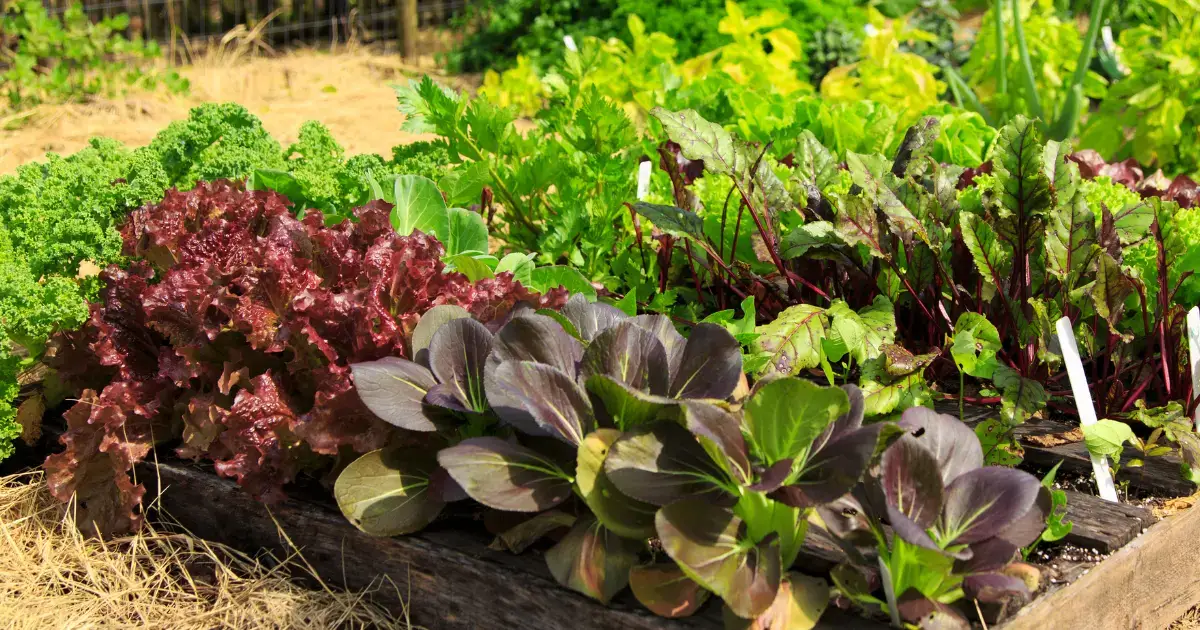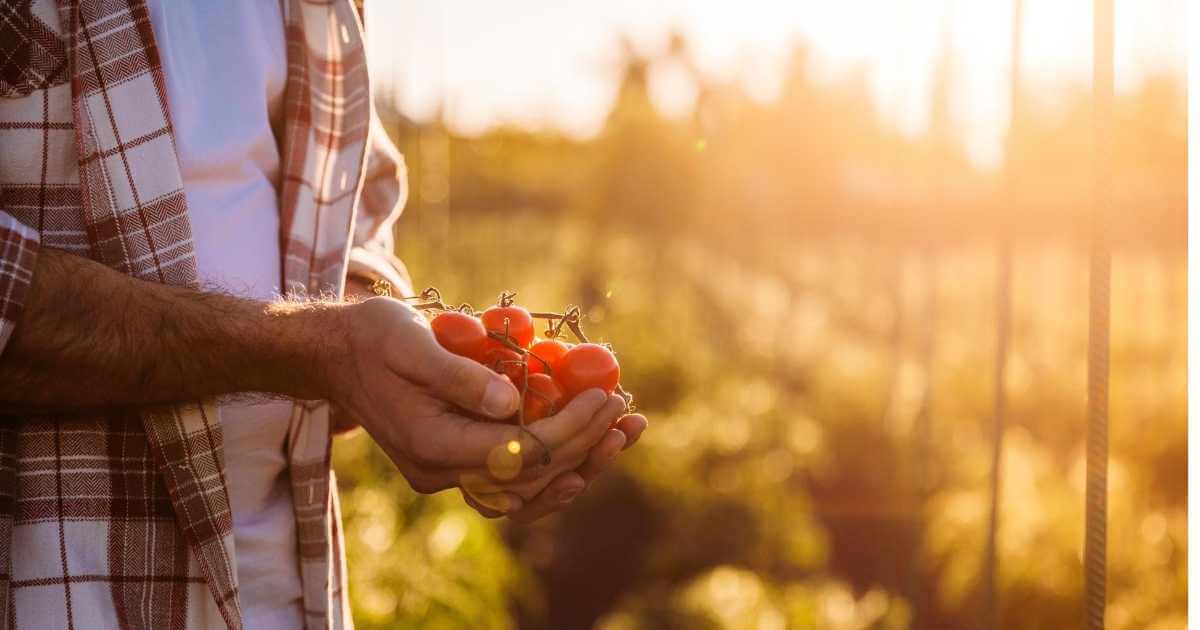
Disclosure: Some of the links below are affiliate links. If you click through and make a purchase, we receive a small commission. This allows us to continue to deliver valuable, free content to North Texas gardeners. Thank you for your support!
When I started gardening like a farmer, my productivity skyrocketed. I grew more food and flowers than I ever thought possible. Here are 5 ways to grow the best garden in the neighborhood by gardening like a farmer.
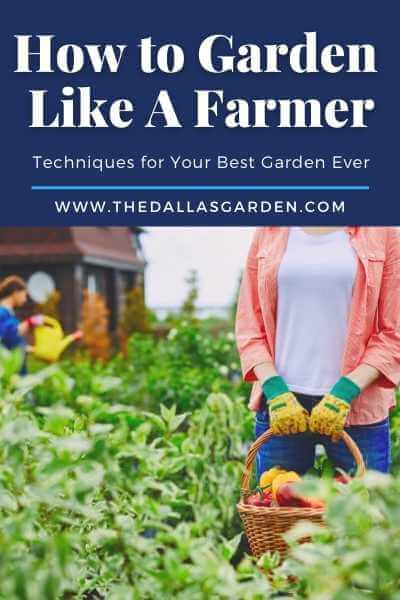
1. Keep detailed records.
An agriculture scientist I know says that the most successful farmers always keep the best records.
Farmers are often required to keep detailed planting records for reporting purposes, but these detailed records also give them the power to make better decisions year over year.
By keeping detailed planting records, you will learn more quickly from your mistakes and capitalize more quickly on your successes.
What should you be recording? Here are the records to keep for each plant:
- Seeding date
- Germination date
- Seedling health (on a scale)
- Date ready for transplant
- Date of transplant into garden
- Date of first harvest
- Date of final harvest
- Date of removal from garden
- Total weight of harvest
Use technology
At first, I kept my planting records in an Excel spreadsheet. But I was always forgetting to update my file at the end of the day. This year, I started using Google Sheets. Now, I can update records from my phone while I am standing in the garden with the Google Sheets app.
I also use Google Sheets to track the total weight of what I harvest. Instead of weighing the produce in the field, I weigh the produce as it is being used – in the kitchen, put into storage, or given to a friend or a food pantry.
Supplement data records with notes
In addition to statistical records, be sure to keep journal-style notes. These are more free-form notes that record weather patterns, in-the-moment results or experiences, and general reminders.
It’s also helpful to your use your journal-style notes as an activity log. Record what garden tasks you perform and how well they worked or what you would do differently the next year.
For example, this year I tried the Florida Stake and Weave method of supporting tomatoes. I definitely plan to use this method again, but next year I will invest in a stake driver make sure that my stakes are deeper in the ground and less prone to bending and leaning.
2. Grow more of less
Highly productive farms focus on growing a large amount of a small number of products. This allows them to benefit from both economies and efficiencies of scale. So, instead of growing 15 different vegetables in your home garden, focus on just 4 or 5 and grow more of each. Why?
It’s more efficient
Caring for twelve tomato plants is actually not much more work than caring for three tomato plants. But you get four times the harvest.
Think about how an Amazon warehouse works: each person is responsible for focusing on the same general task every day. Instead of having to switch tools, get a different size box, or go to a different location in the warehouse, they focus on one responsibility at a time. As their competency grows, so does their output.
The same idea applies to tomatoes. Once you
It’s more cost-effective
Growing more of less also saves you money.
When I order garlic, I purchase a “variety pack” of eight different kinds of garlic, and save 15% off the price of purchasing each variety individually. The same economies of scale apply to my onion plant purchase.
The fine folks at Dixondale Farms offer a quantity discount. If I order one bunch of Superstar onions, I pay $12.35 per bunch. But if I add two more bunches to my order, I pay just $7.30 per bunch. Now that’s a good deal!
3. Wake up early
Did you know that there is no such thing as a “morning person”? People who wake up early go to sleep early. It’s as simple as that. And people who want to be really great gardeners wake up early because it’s the secret to a better garden.
Getting to the garden early is especially important in the North Texas heat.
Why watering in the morning is so important
- Plants utilize water more efficiently during the coolest part of the day.
- Less water is lost to evaporation.
- Plants that don’t get watered until afternoon or evening are under extreme stress during the hottest part of the day. This stress can cause stunted growth, fruit loss, and increased pest pressure.
Watering at night increases the chances of disease.
4. Plan ahead.
Farmers start planning for the following season as soon as the harvest leaves the field, if not sooner. Think like a farmer, and always plan ahead by at least three months.
How to plan ahead in your garden:
- Orders seeds well in advance of planting.
Ordering seeds early gives you the best selection, and you won’t be late getting plants in the ground while you wait on a shipment. - Prepare your garden beds in advance.
A healthy garden starts with healthy soil. Before planting a bed, whether spring or fall, you will need to build up your soil’s health by adding compost. If starting a bed from scratch also till in some expanded shale. Expanded shale helps to break up our heavy, clay soil and improve drainage for strong, deep root growth. - Review past records.
Before placing seed orders or buying new transplants, review your notes and records from the previous year. What worked? What didn’t? What will you do differently this time?
5. Use only the best tools and supplies
A farmer can’t afford to lose a harvest because they used the wrong tools or the wrong supplies. So, why would you?
Garden tools and supplies worth investing in:
- Top-quality seeds – Always buy the best seeds that you can afford. Good quality seeds will pay for themselves tenfold in strong germination rates and plant performance. (See Resources for our favorite seed companies.)
- Support structures – There is nothing worse than losing a tomato plant due to a failed support system. Always invest in strong and durable support structures for your plants.
- Pruners – Reliable pruners are a gardeners best friend. Top-quality pruners are very sharp, comfortable in your hand, and durable for years and years of use.
- Potting soil – It is tempting to buy the cheap stuff when stocking up on potting soil, but inexpensive potting soils can be filled with nutrient-robbing shredded wood,
weed seeds, and mushroom spores. Good potting soil offers superior nutrition and moisture retention. - Professional seed-starting supplies – An investment in professional-quality seed starting supplies is an investment in the success of your seedlings. For a list of our favorite seed-starting supplies, go to our Resources page.
Supplies that you can skimp on:
- Gloves – Are you surprised by this? Yes, garden gloves are one of the garden supplies that I skimp on. After years of investing in very expensive garden gloves that mildewed, tore, or melted (yes, melted!), I buy inexpensive, men’s, waterproof workgloves. Why men’s? Because women’s gloves are more expensive for some reason.
- Watering cans – Don’t break the bank on
watering cans. In fact, my favoritewatering can is a gallon jug unless I need a long spout forwatering seedlings. Gallon jugs are also very helpful becausefertilizer dilution instructions are usually by the gallon.
- Can Eating Tomatoes Help Prevent Weight Gain? New Study Says Yes - May 25, 2025
- New to Gardening? Join Our Step-by-Step Beginner Gardening Class - April 24, 2025
- Why “Intensive” Gardening is Not Good - March 9, 2025

